 I don’t know if authors are targeted by scammers more than any other profession, but sometimes it feels that way. There are a couple of reasons for this. Firstly, many writers are “Newbies” who are ignorant of how the publishing industry works, That means that they don’t have the knowledge to identify a scam when they see it, which makes them easier targets. The second reason is that the publishing industry has always used a lot of freelancers to provide services: editors, proofreaders, graphic designers et al. The arrival of easy to access self-publishing, back when Lulu was founded in 1998, gave those freelancers a whole new market for their skills. It also provided employees with those skills the opportunity to establish “side hustles” to earn more money outside of their normal workplace. That made it very easy for scammers to use those sorts of services to disguise their scams.  I must emphasise at this point that there are a lot of hard working people out there offering their professional skills, who do a good job at reasonable rates. Unfortunately, it isn’t always easy to differentiate between them and the scammers. The scams tend to fall into two types. There are the ones that rely on vanity to draw in the victim and there are those that offer a service which they either don’t provide, or which is such poor quality that it is as good as a scam. Let’s start with the vanity scams.  Let’s face it, as authors, we often think that our work doesn’t get the recognition it deserves. This is especially true for self-published authors who are struggling to sell even a few copies of their book, let alone rise to the dizzy heights of “best seller” status. And that is the feeling that the scammers play on to draw you in. It will often start as a DM or an email, saying how the sender works for a publishing company, or is a representative (perhaps “talent spotter”) for an agent, producer or someone else who can turn the author into the next “big thing”.. The DM or email will tell you that whoever sent it really liked your book and thinks it has a real chance of success and they will help you to get it into the hands of whoever they say they represent. There will be no mention of money – yet. They will often want to speak to you on the phone, because it is much harder to resist a scammer on the phone because they can be so charming and persuasive. OK, let’s unpack that a little bit. Firstly, it is a direct appeal to the author’s vanity (we all suffer from it, even if the amount of vanity varies). It has the author punching the air and saying “Yes, I always knew my book was good.” Essentially, most of the scammer’s work has been done just because of that reaction.  Agents, trad publishers, TV and film companies don’t need to “reach out” to authors to find work to publish., They are inundated with authors and script writers sending them work. Most of it is good work, too. The publishers and producers are spoiled for choice. Simply knowing that can save you from the scammer. There is a variation on that theme, which is the offer to get your book into one of the well-known mainstream bookstores. Barnes & Noble tends to be the bookstore of choice, probably because it is the largest chain in the USA. Again, it’s not how those businesses work. The trad publishing houses are sending them a constant stream of new books, with the added advantage that the publisher is doing the marketing, so the bookstore doesn’t have to. So why would the bookstores need to go through a “middleman” to put a book on their shelves that won’t have that marketing effort behind it? It would just be taking up shelf space that could be used for books that will sell because they are being marketed properly  One of the most common things that is seen in writing groups on social media is the appeal “does anyone know anything about (insert name of business)? They have approached me offering to (insert scam)”. Simply asking the question means the author is suspicious But they aren’t making the post in order to confirm their suspicions. They are making the post in the hope that someone will say “It’s OK, they’re legit. Go with them” Sadly, the responses almost never say that. Remember the main way of identifying a scam is that if it sounds too good to be true – then it’s too good to be true. The next type of scam is the vanity or “hybrid” publishers. Now, I’m not having a go at hybrid publishing as a legitimate industry sector. If you are happy to pay for someone to print a whole load of copies of your book for them to end up in your shed while you try to find some way of selling them, that’s your business not mine.  But there are a lot of scammers describing themselves as hybrid publishers with the sole intention of getting their hands on your money. The best you can hope for is a whole load of badly printed copies of your book, the worst is an empty wallet and no books at all. Do some research. Find out what others have to say about the company. Not on Facebook, but by doing real research. If they are scammers, there will be “red flag” posts on the internet warning about them. If they are genuine, there will also be articles about them describing their business – and I don’t mean on their own website. Someone somewhere will have posted a review saying how well they serve their customers. Two new scams that have appeared recently are the “foreign rights” scam, and the “translation” scam.  The foreign rights scam offers to find publishers overseas who will buy the rights to publish your book in another country. You pay a fee to an “agent” and they will do the work for you. Needless to say, once they have got your money that will be the last you will see of it. They might send you an email from time to time to report “progress” but it will always say “nothing to report yet” or, perhaps, “I have a publisher interested but nothing definite at the moment.” They may even come back to you and ask for more money because they just need to make “one last push” to close the deal. The translation scam is different because there may be a product at the end of it. The problem is that the author of the book won’t own the copyright on the product – the scammer will. Under EU law, and in some other countries, if a translator makes a translation of someone’s work then they own the copyright on the translated version. The author has to give permission, but that just means saying yes in an email. In practical terms the “translator” (the actual work could be done by AI) can sell their version on Amazon and the author can’t do a thing about it and will certainly never see a penny of the royalties.. There is one exception and that is in Germany. There the author retains their copyright even on the translation. So, the first thing to do if someone emails to ask if they can translate your book isn’t to say yes, It’s to say “How much will you pay me for the right to translate my book?”  Scammers try to get around this by posing as a student who wants to use your book as a course work assignment, but don’t fall for that! Finally, we get to the “service” scams, These are often the hardest to spot because there are so many freelancers plying their trade these days. The first question any author should ask is “can I do this for myself, for free?” In many cases you can. Websites such as KDP and Draft2Digital offer a lot of helpful articles on their sites to assist with the self-publishing process. For audiobooks there are similar helpful services on ACX.  For those things where the author would benefit from professional assistance, such as editing, proofreading and cover design, then the warning is “buyer beware”. Use trusted sites such as Fiverr to find the services you need. The reason that you can trust them is that they hold onto the money you pay until you sign off to say you are happy with the product that is provided. That means it is much harder for scammers to operate. If you don’t want to use Fiverr or similar sites, then seek out recommendations from people on social media. DO NOT respond to the sorts of message that say “DM me” or “Give me your phone number”. You have no idea who you are dealing with. If someone says “I used so-and-so and they were good.” then that is different. 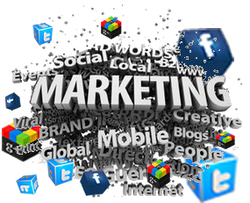 Perhaps the biggest area for scams, however, is in marketing services. You just have no idea if the person you are dealing with is actually doing anything. They may promise to send out a gazillion emails to their lists or put out a post on X that will be seen by a gazillion followers, but you have no idea if it is true. Even if you find their pages on X (or wherever) you have no idea if their followers are genuine or not. It is very easy to buy “followers” (fake accounts) and, of course, we all know about the bots that make up so much of social media these days. And, having paid your money and your sales haven’t improved, you have no recourse simply because they won’t guarantee their services. Which means they can keep committing the same scams because they are fireproof.  As we have said many times on this blog before, when it comes to marketing, learning how to do it yourself is always going to be the cheapest (and safest) option. It will also be the best one because no one will market your book with the same passion for it as you have. If you really want to know if what you are seeing, or being offered, is a scam, then check it out on “Writer Beware” which is a website that exposes scams targeting writers. Scams Aimed At Advertisers For those authors who advertise using Meta/Facebook look out for comments on your ads, DMs and emails that tell you that you have infringed Facebook’s advertising rules in some way. They are quite common, especially for new advertisers.  They will usually say that your account is about to be closed or blocked or that your ad will be suspended or deleted if you don’t take action. There will be a link, and it can be confused with genuine Meta URLs. Some of the communications are accompanied by the Meta logo, so it is easy to be fooled. But, as you can see here, anyone can get hold of the Meta logo. Meta does communicate with advertisers using DMs, but if the message relates to payments don’t click on links, Log in to your FB account and check your account settings. Any issues with payments will be flagged there. For ads, it is easy to check if they are active or suspended in your ads dashboard and then query the issue directly with Meta. If in doubt, contact Meta direct, DON’T CLICK ON ANY LINKS. And please do your fellow authors a favour by reporting the scammer’s account and then blocking it. If you have enjoyed this blog, or found it informative, then make sure you don’t miss future editions. Just click on the button below to sign up for our newsletter. We’ll even send you a free ebook for doing so.
0 Comments
Disclaimer. The views expressed in this review are those of the reviewer and not necessarily those of Selfishgenie Publishing. No payment or inducement was requested, offered or received in respect of this review and the reviewer purchased a copy of the book.  If you like your murder mysteries cozy, then “Death Comes To Marlow” by Robert Thorogood is probably just the book for you. For those of you who aren’t native Brits, Marlow is a small (and rather expensive) town about 35 miles west of London, sitting on the banks of the River Thames. I have been there several times and I can say that it is not the sort of place where you might expect a murder to happen – which is why it is such a great location for a cozy mystery. This is actually the second book in the series, the first being “The Marlow Murder Club”. I haven’t reviewed that because it has already been on TV as a drama in March of this year, so you can go and watch it for yourself on the U streaming service. But the real reason I’m reviewing the second book and not the first is that I think that this book is better in many ways. If you haven’t read the first book, or seen the TV series, it follows Judith (a senior citizen), Becks (the vicar’s wife) and Suzie (a dog walker) as they investigate a seemingly impenetrable murder, all the time getting under the feet of Detective Sergeant Tanika Malik of the Thames Valley Police. “Death Comes to Marlow” catches up with this trio the following winter when Sir Peter Blake is murdered on the eve of his wedding to a much younger bride. But wait, is it a coincidence that Judith, Becks and Suzie have all been invited to a cocktail party to celebrate the forthcoming nuptials and are present when the murder takes place? Of course it isn’t (but I can’t tell you why). Two out of the three amateur sleuths believe that the death, in bizarre circumstances and inside a locked room, is no accident. DS Tanika Malik takes some convincing, but eventually she decides the death is at least suspicious. Unfortunately, Tanika’s boss returns from sick leave at that point and he is dismissive of the idea of murder, Which leaves the three amateurs no option but to keep on investigating (with a little bit of inside help from Tanika). There are several suspects, and they all have seemingly cast iron alibis, so who could have committed the crime? And, perhaps more importantly, how could they have committed the murder inside a locked room and then made their escape? I can’t say any more about the plot without giving away spoilers, but lovers of Miss Marple, Murder She Wrote and other amateur sleuths in the cozy genre, will find this book entirely to their taste. It is well written, the characters are well developed and, importantly, the clues are all there so that you can try to solve the mystery for yourself. So, why only 4 stars? Well, it is all down to me really. I worked out the “who” of the whodunnit very early on and also the “why” for the murder. I even worked out a tiny bit of the “how” because the author used a plot device that I had seen used in other cosy mysteries. This made me feel that the author hadn’t quite fulfilled the promise of the “mystery”. After all, if I can solve the murder that quickly, so can anyone. All that remained was the rest of the “how” and that was far more challenging, and I had to wait until the end of the book to find out how the murder had been committed. So, the author really had created a mystery and my temptation to give the book 3 stars was dismissed and I upgraded it. But, as I said, the clues were there for me to interpret had I been a bit cleverer. Did I enjoy the book? Let me put it this way. I’m already reading book 3 of the series, “Queen Of Poisons” and I have book 4, “Murder On The Marlow Belle” on pre-order (at the time of writing. By the time you read this I may had finished reading them all). So, I recommend “Murder Comes To Marlow” to all lovers of the cosy mystery genre. To find out more about the book and the series, click the button. If you have enjoyed this book review, be sure not to miss out on future blogs by signing up for our newsletter. We’ll even give you a free ebook for doing so.  There is a new scam going the rounds, tempting authors into giving away the rights to their books for free – and it is entirely legal. This affects EU copyright law, but globally the laws are very similar so you may want to keep reading and then check the law where you live. Particularly the law as it applies in the country where the scammer lives, not where you live, because that is where you will have to pursue your claim for copyright infringement. The scam relates to the copyright laws for the translations of books. It was meant to protect translators and give them some ownership of what they had worked hard to produce. But with recent advances in AI the law has not been able to keep up and this has opened up a loophole for scammers to wriggle through. I want to reassure you that not all translators are scammers. The vast majority are honest people and will deal with you honestly. But, as usual, a small minority give the rest a bad name. So, how does this scam work?  You get an email or a DM asking if a “student” can translate your book as part of their university work. Or it may be that someone is offering to do a translation of your book for free for you for “practice”. Being a kind person, you agree that the student can do the translation. However, it is the translator who owns the copyright of the translation, not the author and this is the loophole that the scammers exploit.* They can upload the translated version of the book onto Amazon and sell it legally and there is nothing the author can do about it, because the author gave permission for the person to translate their book – and the scammer will have the email or DM to prove it. 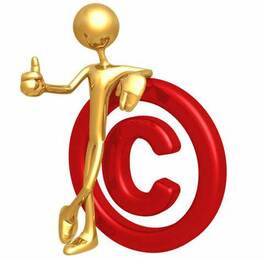 It may not even be a decent translation, but the book’s buyer won’t find that out until they have bought the book and it is you, the author, whose reputation will be damaged by the poor translation as it is your name on the cover. The reason that the translator holds the copyright for the translation is because of the work they have put into it. Of course, with AI available these days the “work” may be minimal, but copyright law has yet to catch up with this innovation. This would also apply if you hire a translator to translate your book into another language for you, unless you have a contract prohibiting them from publishing the translated version. But the scam doesn’t end there. Because the translator holds the copyright for their translation, they can sell the rights to further translations to third parties. So, you have said OK to your book being translated into French, for example, but the translator can then sell the rights to their French translation to be translated into Italian, Spanish, Russian or any other language they can find a buyer for. Or they can use AI to produce those translations for them. And you won’t receive a penny.  As the author you can protect your interests by refusing permission for a translation unless there is a contract in place to protect your rights as the originator. This could be an upfront payment to you for the translation rights or it could be a royalty share deal. But don’t just say “Yes” without that agreement in place. Don’t even suggest that you will consider them doing the translation. Say only that you are willing to negotiate a contract. So, beware. If someone approaches you and offers to translate your book into another language, especially if they are offering to do it for free, because they may not be acting in your interests but in their own.  If you are willing to consider allowing someone to translate your book, we recommend that you take this approach: 1. Ask them if they are willing to enter into a contract with you in order to protect your interests. The likelihood is that if they are scammers you will hear no more from them. 2. Agree terms for the transfer of the rights to translate the book.*. This may be a one off up-front payment to you for the rights, or it may be a royalty share agreement for publication of the translated work. It could be a mixture of both with an upfront payment being traded off for lower royalties. 3. Agree which languages they will hold the translation rights for. Usually this will just be one language, but it could be more than one, which makes the rights more valuable as it increases the potential sales volume. 4. Once your book has been translated into one language, the translator will have the right to sell the rights for translation into a third language, so your contract must prohibit that. 5. Agree who will do the publishing of the translated work, you or the translator. If it is the translator, agree the monitoring arrangements for sales on which the royalties will be calculated. This can take the form of KDP sales reports. 6. Agree who will do the marketing and how the marketing costs will be deducted from royalties in order to maintain an equitable balance between author and translator. 7. Find a solicitor/lawyer who will draft the contract on the terms you have agreed. It will cost you money, but it could earn you more in the long term. This may appear complicated but remember that your book is your property, and no one will protect your rights to your book except you. The law is on your side, but in this case it is also on the side of the translator. * There is one exception. In Germany, national laws state that the originator of the work holds the sole copyright, and that copyright cannot be transferred.. So, any scammer is unlikely to be offering to translate your work into German. But get a contract anyway, just to be safe. If you have enjoyed this blog, or found it informative, then make sure you don’t miss future editions. Just click on the button below to sign up for our newsletter. We’ll even send you a free ebook for doing so.  We have to talk about blurbs again, don’t we? In writers’ groups on social media, I am still seeing such awful blurbs being posted, inviting feedback, and I have to wonder why authors don’t realise how badly they are showcasing their books. There are so many blogs and books about blurb writing, they all say similar things (including this one) and they are all quite clearly not being read by authors. If they were the blurbs wouldn’t be nearly so bad. I’ll be recommending one of these books later. I suspect that it is because authors view writing a blurb from the author’s end of the telescope. They have lavished weeks, months or even years of effort on their story and they want to tell the reader as much as possible about it in their blurb. But instead of making the book sound exciting, they try to tell the story in 300 – 500 words and that just does not work. When you view the same thing from the readers’ end of the telescope, the blurb looks very different. In the blurb all the reader wants to know is “Will I like this book?”.  Creating a blurb is not a writing exercise, it is an exercise in psychology. Everything about a blurb has to say “this is the best book you will read this year” while actually saying something completely different. Every word has to have meaning for the reader in a way that they don’t even recognise. Which is why trad published authors don’t do their own blurb writing. Trad publishers hire specialists to write blurbs. People who know how the psychology of blurbs works. So, as well as writing, editing, proofreading, cover design and marketing, self-published authors have to add a new skill set to their arsenal, and it’s called copywriting. It is a major skill used in advertising of all types and a blurb is just another form of advertising. The buying of a book is a lengthy process. It may only take a few minutes, but in psychological terms it is a lifetime of decision making.  We call these decisions the “sales funnel”. It’s the basic process that takes place between the reader first seeing your book ("awareness" in the graphic) and the point at which they click (or tap) on the “buy now” button. The thing is that in terms of the “sales funnel” the blurb is only about halfway along the path. (The "interest" section of the graphic). But if the reader isn’t attracted by the blurb, they won’t take the next step along the path (desire), so the sale is lost. Think of a blurb like a bridge across a river. On one side you have the book’s cover, title, subtitle and price, and on the other side you have the free sample (which stimulates desire), next to which is the “Buy Now” button. The Bridge of Blurbs allows the reader to cross from one side of the river to the other. I’ll return to the latter stages of the sales funnel at the end of this blog, just to remind you of what they are. But first I want to talk about the barrier of the “read more” button.  When you look at a blurb on Amazon you are only shown a few lines of text. The more “white space” the author has included, the less text there is to read. Then comes the “read more” button which will reveal the rest of the blurb. Now, ask yourself this question. If you haven’t got the reader’s attention after those few lines of text, will they click on that “read more” button? I think you already know the answer, but just to make it clear – No, they won’t. They will go and look at a different book. Getting the reader to click on the “read more” button is the first challenge to be met by the blurb. It is a barrier to sales that can be as big as the Great Wall of China.  Let’s start with the “tag line” because that is usually the first bit of the blurb the reader sees. So, what makes a good tag line? It is one that forces the reader to ask questions. If they start to ask questions, they will want to know the answers and that means reading the rest of the blurb. I came across this example of a great tagline. It’s from self-published bestselling author Mark Dawson. “MI5 created him. Now they want to destroy him.”* The first thing to notice is that there is clear signal as to the genre of the book. “MI5” can only mean spies and secret agents. If the reader likes those sorts of books, they are likely to read on. But those two sentences also invite the reader to ask questions. 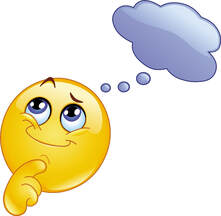 With your “reader” hat on, start asking some questions about those 2 sentences. I got “Who is the ‘him’ that is referred to? Why did MI5 create him? What did they create? An assassin? A Spy? Why do they want to destroy him? What did he do wrong? Will they succeed? And, the 2 sentences together add up to one thing – betrayal. So, the reader is almost bound to feel some sympathy for the character and sympathy is a powerful emotion to invoke. Importantly, they will start to read the rest of the blurb in an effort to find some of the answers to their questions.  That isn’t the only type of tag line you can use. Some authors use a quote from their reviews, and they can work well. Research has shown that click rates for review quotes are quite high. Quotes work because readers identify with other readers. It’s a bit like being part of a club. But reading the tag line is like seeing an attractive person across a crowded room. They look nice, but are they interesting? So, you go across the room to talk to them to find out. After initial introductions, they start to talk.  “I was born in London, but my family moved to Nottingham when I was 5. I went to primary school at … then secondary school at … before starting at university where I studied …. After that I went to work at … My brother went to … and he lived with my Auntie Vi. She’s a …” Are you bored yet? Are you looking over their shoulder to see if there is anyone more interesting you can go and talk to? So, imagine your reader’s boredom when you start to tell them all about your character’s backstory, or the world you built for them, or their extensive family tree and all the other things authors stuff into their blurbs. Yet the author still expects the reader to click on the “read more” button despite the fact that they have already sent the reader to sleep.  The second para has to tell the reader what the story is about. Not the whole thing of course. You introduce the protagonist, drop in tropes that indicate the genre and the type of story within the genre. But above all you introduce the conflict because the conflict starts to raise emotions in the reader. They start to like the protagonist, they start to sympathise with them. In short, they start to engage with them. To do that you have to use words that trigger emotional responses. “Vulnerable” is one such trigger word, often used in romance. “Courageous” is one seen in action adventure, sci-fi, fantasy and more. Below is a list of words that trigger an emotional response. There are many more, of course, but these are seen frequently in blurbs. The reason they are seen so frequently is because they work. You only need to use a couple to get the reader responding at an emotional level. Sympathy is a particularly powerful emotion. If the reader sympathises with the character’s plight, they are going to want to know what happens to the character. Which means that the character can’t be a victim. People don’t actually sympathise with victims that much because victimhood is passive. What they do sympathise with is a victim that is fighting back, because that is active.  If you can start to raise those emotions the reader will click on that “read more” button and you are a long way through the funnel to getting them to buy the book (but still not the whole way). So, the author has to hit the reader between they eyes with the sorts of words that are going to excite their imagination. These are called hooks, because they hook the reader into reading more. A hook at the end of a paragraph encourages the reader to move on to the next paragraph, so you can’t have too many of them. Hooks are often multi-layered. The top layer invites questions, the next layer invites an emotional response, the third layer will raise the level of the drama. But the most important part of the hook is the bit that will appear above the “read more” button. If it is hidden from view it might as well not be there because it may not be seen at all. 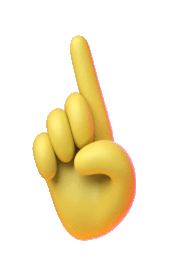 Most blogs you will read on blurb writing agree that the “sweet spot” for the length of a blurb is between 250 and 350 words, around 100 (40% or less) of which will be above the “read more” button.. Anything more than that and you will lose the reader, and they’ll move onto the next book in the search results. YOU CANNOT ALLOW THAT TO HAPPEN Many authors put a call to action (CTA) at the end of the blurb. This is not a good idea because the reader is not yet ready to buy. They will see the CTA as being “pushy”.  If that was the right place to put the CTA, Amazon would put one in - and they don’t. Amazon puts the CTA at the end of the free sample, because that is when the final decision to buy will be made (I’ll return to that in a moment). But that doesn’t mean there is no CTA in the blurb at all. Any good blurb will have a CTA, it’s just that it is disguised. The form of disguise is the “cliffhanger”. This can be a statement eg “Her survival is at stake …” or it can be a question eg “Will she survive …” Note the use of an ellipsis rather than a question mark. It leaves things open ended and that is good for keeping the reader engaged. 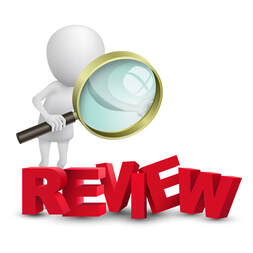 If the blurb has done its job, the reader will now go to one of two places on the sales page as they take the next step along the sales funnel. They may scroll down to the reviews because, as I said, readers like to know what other readers thought of the book. Notice I didn’t mention the product information, which they will have to scroll past to get to the reviews. That’s where the sales rankings are displayed. Interestingly , readers don’t seem to bother with them too much. Sales ranks seem to bother authors far more. I’m sure readers do look at the product descriptions, but they don’t seem to influence sales. If the book is so new it hasn’t had any reviews, it doesn’t mean the sale has been lost. Readers aren’t stupid. They know that a brand new book won’t have reviews. So, they will take the final step along the sales funnel to the “free sample” (previously called the “look inside” segment). 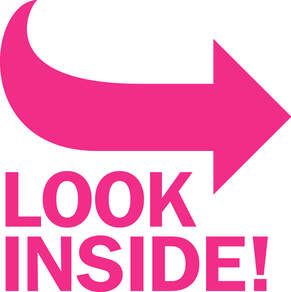 Your book has excited interest and kept the reader on the page, but the free sample stimulates the desire for the book. If the free sample doesn’t keep the reader interested until they reach the “buy now” button, there is no desire and the sale won’t be made. This isn’t universal, of course. A percentage of readers will buy without even reading the blurb, because the book has been recommended to them by someone whose opinion they trust, or they are familiar with the author and like their books. It may even be the long awaited next book in a series. A percentage of readers will buy on the strength of the blurb alone. A percentage will buy because they trust the reviews. But by far the largest percentage of sales come from the free sample. So, why so many words dedicated to how to write a blurb?  Because the blurb is part of the sales funnel and if the reader isn’t captured by it, they won’t get to the reviews or the free sample. They can’t get to the other side of the river without crossing the Bridge of Blurbs. At the top of the blog I mentioned a book on blurb writing that I would recommend. It gets deep into the psychology of blurb writing but it isn’t heavy. It is Robert J Ryan’s book “Book Blurbs Unleased.” If you only ever read one book on blurb writing, make sure it is this one. It’s free to download on Kindle Unlimited. * The use of bold text for the tag line was deliberate. Tag lines should always stand out from the rest of the words. If you have enjoyed this blog, or found it informative, then make sure you don’t miss future editions. Just click on the button below to sign up for our newsletter. We’ll even send you a free ebook for doing so.
 Selling a book to someone who has just enjoyed reading one of your books is the easiest book you will ever sell. In business terms it’s called “picking the low hanging fruit”. If you have another book out, then it’s easy to do. You just put a link to the next book in the backmatter and the reader clicks on it and the sale is as good as made. But what if your next book isn’t out for a while? How will the reader know when it is out? You can’t expect the reader to go onto Amazon once a week to check and they may not follow you on social media, so how do you communicate with that satisfied reader 3 months, 6 months or even a year from now?  No matter which book marketing guru you read, they all agree that email lists are one of the top 4 ways to sell books (the other 3 being ads on Amazon, Facebook and Bookbub). So, why do so few Indie authors use this method to communicate with readers and boost their sales? Every Indie author selling in the 6 figure income bracket (and higher) has an email list as long as the Norwegian coastline and they use it every time they launch a new book (and at other times in between, of course, but more of that later). It’s why they are 6 figure plus income earners. That should tell every Indie author everything they need to know about email lists. Yet still there is an incredible amount of resistance from Indie authors to building and using them.  Here are some of the reasons that a lot of Indie authors give for not using email marketing (in no particular order), with our response beneath. "I don’t sign up for email lists, so no one would sign up for mine." You are not your readers. Lots of readers sign up for as many lists as they can because they are always looking for new book recommendations. "They are a lot of hard work to build and maintain." True, but without hard work, nothing happens – especially sales. "It is expensive to build an email list." Not true. While it isn’t free, as a marketing tool it is far cheaper than advertising (I’ll cover costs later). "I don’t have time for building and maintaining email lists." Nor did those 6 figure income authors when they started out, but they found the time and that’s why they are now 6 figure plus income authors. If you have your own pet objection which we’ve missed out, put it in the comments and we’ll be happy to respond to it.,  If, at this stage, you are still saying “email lists are not for me” then fair enough. Thanks for reading this far and we’ll get on with writing this blog for the benefit of the authors who want to make some decent money from their books. OK, now they’ve gone, we’ll admit that not everyone who uses email marketing is going to reach the dizzy heights of 6 figure plus incomes. But they can get to the mid to upper 5 digit levels. We know this is possible because we are already achieving that for our authors. So, what do you need to start? Well, you need something to attract readers to your email list. Some people call these “freebies”, some call them “reader magnets” and I know of one person (who I will name later) who calls them “cookies”, because she hands them out like cookies. I’m going to call it “content” because that covers a whole raft of possibilities. Some of these are:
 There will be some work in creating that sort of content just for it to be given away for free but, to use an old British term, they are a sprat to catch a mackerel. If your email list grows at any sort of speed you will want to automate as much of the work as possible, or you really will find yourself drowning in emails, so the next few paragraphs talk about the businesses that can do that for you. You need an email list management service. There are many of these around, some of which have free packages with limited functionality, but even if you need to subscribe they have packages starting from around $9 a month (£7 – price correct at time of writing). Mailchimp and Mailerlite are the market leaders but there are smaller providers. A word of warning. Having used one of those companies I can’t say they are not the most user friendly when it comes to setting up automated responses and emails. You will have to spend some time watching their tutorials and even then you may have difficulties and have to email for support..  Then you need a delivery system to get your content to people so you can harvest their email address (ethically and legally, of course) for transfer to your email service. If you want to follow best practice you will also want to deliver new content to existing subscribers. There is no doubt about the market leader in the delivery field. It is Bookfunnel and we have no hesitation about mentioning them. All their packages cost money and you will have to go in at above the most basic subscription level if you want to capture email addresses. What Bookfunnel calls “Mid-List Author” has a subscription price of $8.33 a month or $100 annually (£6.50 and £78.33 - prices correct at time of writing) and that is the minimum package you need. When you compare those prices with what you might have to pay for advertising, you can see that email marketing is far more economical. You can easily spend $100 a week to run a Facebook or Amazon advertising campaign.  The rest of this blog is devoted to how you use Bookfunnel to build your email list from scratch and you have to get a little bit creative to make that work. We’re not going to go into too much detail. You’ll find lots of videos on the Bookfunnel website to help you. The first way to capture emails is “Group Promos”, which offer a range of books by different authors for free, capitalising on the fact that they give readers a choice of content. In these terms a book doesn’t have to be a full length novel, but it usually excludes extracts and sample chapters. The second is more advanced and is “Author Swaps” where you promote a single book by another author in order to generate sales, and they do the same for you.  Bookfunnel has a built in system for preventing cheating and not keeping your end of the promotional bargain. If you don’t promote other authors the way they are promoting you, you’ll find it hard to join a group promo the next time. Bookfunnel calls it “reputation”, but that is all we are going to say on the subject. Feel free to email us if you want to know more. Every month there are a number of Group Promos in the most popular genres that allow a newbie to join without an established “reputation”. Of course, the group will mainly be made up of other newbies, but that doesn’t matter. You are all in the same boat and are all there for the same reason – to get email addresses. To join a Group Promo you need at least one bit of content to give away and most promos are capped to a set number of books per author (typically 2 - 4) so that no one author dominates the promo.  Now, if you don’t have an email list, how do you actually send out the link to the promo? Some promo organisers (anyone can be one of those) even insist that you have a minimum number of email addresses in your list in order to join the group. This is where you have to get creative. For a start, the promo organiser has no idea how many email addresses you have in your list. I’ll just leave that hanging there and let you decide what to do with it. Secondly, all anyone is really interested in is those clicks, so it doesn’t matter where the reader saw the link that takes them to the promo. It could have been in an email or it could have been written in crayon on the back of the door of a public toilet (public bathroom if you’re American). So long as the click is made, nobody is any the wiser. Nor do they really care.  So, instead of using your non-existent email list, you post the link on your social media instead. Don’t worry if you have only a small number of followers (I’d suggest a minimum of 1,000 on Twitter/X). You only need a handful of clicks in order to start to establish your reputation and you will also get an email address every time someone chooses your content as the one they want to download. Now, you do need to be a little bit creative about how you post the promo link. Just saying “free books” and inserting the link isn’t going to attract many link clicks. There is a video available on Bookfunnel on what sort of content to use in your promo emails or posts, so I’m not going to repeat the lesson here. Group Promos typically run for between a fortnight to a month and I suggest you join 2 groups a fortnight but no more. Joining too many promos at once could lead to things becoming unmanageable.  There is a reason for joining two groups, though. I’ll call the two different groups Promo A and Promo B. When you start to get email addresses for downloads of your content as part of Promo A, you can send the link for Promo B to those addresses, providing the promo is still running. And vice versa for Promo B, of course. The advantage of doing that is that you are sending the promo link to people you know are likely to click on it – because that’s how you got their email address in the first place. If you get 10 email addresses from each promo, 20 in total, and you do that twice a month, that may give you 40 email addresses. If your content was a series starter, there is a good chance that 50% of those people will then read through the rest of your series. If your book is a trilogy, that’s 20 sales of Book 2 and 20 of Book 3. And every month you are likely to get the same results again, so you are selling books you wouldn’t have otherwise sold, at the same time as you build your email list for future marketing campaigns. That will more than cover the cost of your Bookfunnel subscription. But don’t forget to put links in all the right places in your series starter. And if you put some different content onto Bookfunnel, you can put links in all the books in the series to get more sign-ups in exchange for that free content. That is called “organic” growth.  But, more importantly, you now have 40 email addresses to which you can send the next promo to. You can still use social media for your promos too, as that increases your “reach”. In fact, I would continue to do that even when you have 10,000 addresses in your email list. Now you have to learn how to use those email addresses in order to build engagement with those readers. You will notice that I didn’t say “sell your books to those readers” and that is because selling is the last thing you should be doing. What you should be doing is using your email list to send out newsletters which build engagement. The sort of engagement that makes the reader feel they are part of an exclusive club. And that means providing them with exclusive content. This turns a reader into a “superfan”. Not only will they buy everything you care to write, but they will tell everyone they know about your books at every opportunity. These people really exist, and newsletters are the way they are found or created.  Now, I’ll be the first to admit that I’m not an expert in the craft of newsletter writing – but I know someone who is. You will recall that I mentioned someone earlier in the blog who refers to her free content as “cookies”. That lady’s name is Tammi Lebrecque and she is one of the acknowledged gurus of email book marketing. She has written two books on the subject and they are called “Newsletter Ninja” and “Newsletter Ninja 2”. I highly recommend reading both books BEFORE you start trying to build your email lists, as they will save you a lot of time and heartache. The first book gets into the nuts and bolts of list building and engagement and the second book takes a closer look at what makes a good “cookie”. So, that concludes our brief (or maybe not so brief, looking at the word count for this blog) tour around emails and list building. It really is one of the foundation stones of a marketing strategy and if you don’t have an email list it is unlikely that you will ever reach the dizzy heights of a 6 figure income. If you have enjoyed this blog, or found it informative, then make sure you don’t miss future editions. Just click on the button below to sign up for our newsletter. We’ll even send you a free ebook for doing so.  Did you know, your book’s meta data on KDP could inadvertently be sabotaging your book? We all know that meta data is key to your book showing up in Amazon searches. I’m not contradicting that in any way. What is also key, however, is not including anything in that metadata that might confuse Amazon’s algorithms. As we all know (despite the growth of AI) computers are stupid. They do what they are told to do. So, if they are told to search for keywords in your meta data in order to place your book in front of the right readers, that is what they will do. The problem arises when we, the authors, use words that aren’t meant to be keywords. They are meant to be something else.  Let me illustrate. Let’s say you are a writer of romance novels. You have spent hours, days or even weeks crafting the perfect blurb for your book. Great! Your opening line of the blurb is “Melissa woke up feeling like a zombie.” Now, you and I know that this is a simile. Melissa isn’t really a zombie, she just went to bed very drunk and is now feeling the effects of her excess. I think that the majority of us can relate to that. The trouble is that Amazon’s algorithms don’t know a simile from a hole in the ground. For them the use of the word “zombie” suggests that this may be a horror story, subcategory “zombie apocalypse”. So, if Amazon now shows the book to lots of horror story readers who then don’t buy it, the algorithm now doesn’t know what to do with the book – or who to show it to. The use of the word “zombie” just once is unlikely to have that affect. But if the author was to say also “her hangover was of apocalyptic proportions” then the confusion would be compounded by that word “apocalyptic” which, coupled with “zombie”, now tells Amazon’s algorithms that this is a book about the zombie apocalypse.. That romance book will be forever shown to readers of zombie apocalypse books and not to the readers of romance who might actually buy it. And it could be costing the author money. If they are running ads for the book, every time a reader of zombie apocalypse stories clicks on the ad, the author will be charged but the reader won’t buy because they will soon discover that the book is a romance, not a novel about the zombie apocalypse. 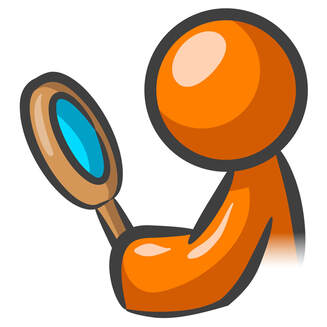 The example I have used is extreme and the categorisation of the book as romance is likely to override the use of the words. But it serves to illustrate my point. Because when the book is in the right category (let’s say fantasy) but uses keywords that can be used in a number of different subcategories, there could be a real problem. If the words you use in your blurb produce results for searches in the wrong subcategories, readers won’t click on the book and then the algorithm will assume there is something wrong with the categorisation and will stop showing it completely. Your keywords will be seen as irrelevant, making your book effectively invisible. I use fantasy as an example here because it has so many subcategories, but the same can apply in a number of genres: sci-fi, romance, historical fiction et al. 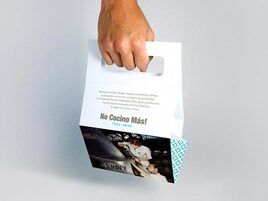 So, our takeaways for this section of the blog are simple:
But there is a second way that some authors sabotage their own books with their meta data. 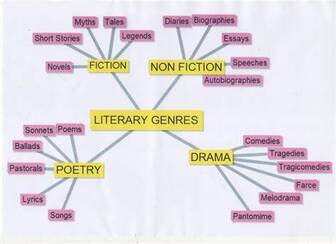 One of the things we often read on social media is questions about how to choose a category for a book that is, according to its author, uncategorisable. The authors seem to think that just because they have included tropes from different genres or sub genres, they have created some sort of new genre. This is both wrong and/or arrogant. It is also very dangerous for the author. Every book has a central story and that is the one that dictates its genre (or category to use Amazon’s terminology). If you try to outthink the categorisation system for books on Amazon all that will happen is that your books won’t be shown to the right readers and therefore won’t sell. OK, there are some readers that won’t read a book in genre X if it contains trope Y, but they are the minority. Most readers are sufficiently liberal to accept a few intrusions from other genres providing the main tropes of the book remain faithful to the genre they love.  So, listing a grimdark novel under romantacy just because it contains a love interest is not a good idea, because romantacy readers won’t read it. If romantacy readers won’t read it, then Amazon’s algorithms will decide it is irrelevant and won’t show it to readers in any fantasy category.. For some reason there are some authors who think that they have created something that doesn’t fit into a category. Just because they have included a noblebright hero in a grimdark novel, they seem to think that their book is no longer grimdark. Likewise, if they then give their noblebright hero a romantic interest, they have strayed even further away from the grimdark category. This is NOT the case. If the main theme of the book is grimdark, then it doesn’t matter what else you throw into the mix. It is still grimdark and in that subcategory of fantasy it should be listed. The same applies to all the other myriad categories on Amazon or other book retailing platforms. Every author who claims that their book can’t be classified in that way is either arrogant, suffering from an overdose of vanity or they just don’t know how the categorisation system works.. There is no such things a new category or subcategory. If there was, Amazon and the other retailers would be all over it, because they employ professional market researchers to stay on top of those sorts of things..  Ask yourself a few simple questions: - What genre of book did I set out to write? - Does the main plotline include tropes appropriate to that genre? - Do the additional tropes that I have included amount to a major change in genre? This will help you to decide if your book is whatever you set out to write. You have not created a new genre just because you included a romance, or a quest, or … well, you get the idea. So, for the second part of this blog, our takeaways are:
With a bit of luck, you won’t then sabotage your own book. If you have enjoyed this blog, or found it informative, then make sure you don’t miss future editions. Just click on the button below to sign up for our newsletter. We’ll even send you a free ebook for doing so.  One of the most time consuming parts of advertising with Amazon is having to do all the research to find those hundreds of keywords that the Amazon Ads gurus tell you that you need in order for your ad to show up in searches. I’m not decrying the advice, because you really do need all those keywords to run keyword targeted ads. I’m only bemoaning the fact that it takes so long to find the right keywords. Tools such as Publisher Rocket can help save time on this research, but if you haven’t got that and don’t want to subscribe to it, you are stuck with doing trial and error research to find what sort of search terms produce the best results for books like yours. But just suppose, for a moment, that there was an easier way to advertise your book than using keywords. And, just suppose some more, that you get better sales using this approach. Is that something in which you might be interested? If it is, then read on.  Now, for a moment, I want to take you away from the world of book marketing and into advertising products in what is called “pay per click” or PPC marketing, which is used both on Amazon and places like Google Ads to advertise a wide range of products. This is a huge area of marketing, generating $ billions per year in sales and the people who market in this area know how it works. They don’t want to do hundreds of trial and error searches to find out what keywords to put into their ads. They haven’t got time for that. They have money to make and, in their world, time is money. This is where we get our inspiration. If one of these PPC marketers wants to sell an electric drill, for example, they don’t go looking for synonyms for electric drills that could act as keywords. They also don’t put in random search terms for electric drill type products that may result in an electric drill coming out top of the search results.  No. What they do is tell Amazon Ads “When someone searches for an electric drill made by Acme, show them my electric drill as well.” And it works. It has probably happened to you. It has certainly happened to me. When I searched for Ping golf bags recently, I was also shown a lot of golf bags that weren’t made by Ping but which might also suit my purpose. Some of those were cheaper than the Ping bags and it was one of those that I bought. And very nice it is too. So, substitute a book title or an author name for “Ping golf bag” and that is how this system works for authors.  It is called “product targeting” and it needs far fewer searches to find suitable targets than hunting down 2 or 3 hundred keywords. And you can be very specific about which products you want to target. because you use the product’s ASIN to identify it, rather than phrases that can be either too broad or can be misinterpreted. If you do happen to subscribe to Publisher Rocket, their competitor analysis tool will also speed up this process, but for the purposes of this blog I’ll assume you aren’t a subscriber. Where “Science Fiction” can produce thousands of potential books in the search results, some of which are like yours but many of which aren’t, ASIN 123456ABCD can produce only one result – and that result is a book that would sit comfortably right next to yours on a bookshelf.  That’s providing you have selected the ASIN with care, of course. If you just pick a hundred books from the best-seller list and include them in your ad, your ad won’t work because the results won’t be relevant to the readers - and Amazon hates irrelevancy in ads. It hates it to such a point that you will have to pay more just for your ad to be seen. You will also pay for a lot of clicks that could never result in sales because the wrong readers are seeing your books. So, what do you have to do to create a product targeted ad? First of all, you have to select your “targets” and those are the books like yours that people are searching for. Let their authors go through all the pain of finding the right keywords. All you have to do is say “When this book appears in search results, show them my book too.”  So, you do your searches by category (genre) and sub category to find books that are similar to yours. If you write “space opera” you are looking for space opera books specifically, but you might also look for neighbouring categories such as space marines, space military, deep space exploration etc whose readers might also buy your books. But just a health warning here – if you stray too far from your own book’s category your readers may see your book as less relevant to them, with all the consequences that will bring regarding how Amazon will treat your ads. When we do this we look for books that are doing well in the sales rankings for the subcategories in which they are listed, so in our example we would be looking at “science fiction – space opera” books that are doing well in the charts.  We don’t want the big names though. Targeting Isaac Azimov probably isn’t a good idea, because readers of his books may be prejudiced against Indie authors. Just an aside here, the reading world seems to be dividing into three camps these days. There are those who will never read books by an Indie author, no matter how good the reviews for the books are. There are those who are only reading Indie authors these days because they know they can get good books at better prices from Indies. And there are those who will read both but will tend towards selecting the Indies that are higher up the sales ranks or whose books are getting better reviews. As an Indie author you are better off looking for the Indie authors who are doing well, because their readers aren’t so prejudiced against books by Indie authors. Our starting point is the best seller lists, but you can also use the sales rankings that are shown on the product pages if you are using titles/authors provided by Publisher Rocket. 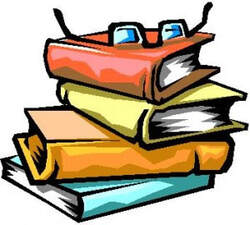 And don’t forget to include your own books as targets, especially if you are advertising a new book or you have a new series out. Readers may be searching your book titles and your author name, so you want to be sure your new book shows up in the results, not just your old books. Then you copy and paste all the ASINs into a document for later use. How many ASINs do you need? Well, you are looking for the books that are selling well and which will be appearing in readers’ searches, so perhaps 20 to 30 books. If you can find 30 books by different authors then that is great. Many readers search for their favourite authors because they know they’ll get lots of other suggestions to pick from in those “also bought” and “recommended for you” lists. Once you have your list of ASINs, it’s time to go across to Amazon Ads and set up your ad. There is a second way of selecting targets and it is very much quicker.  Just as with keyword targeting, Amazon Ads will suggest products (books) that it considers are similar to yours and you can select your targets from that list. However, a word of caution if you would like to go that route. Amazon doesn’t understand your book as well as you understand it. The targets it selects for your book are not necessarily going to be the best targets. They are going to be the books that Amazon thinks are the best targets and that may be very different. Don’t just accept them willy-nilly. Check them out first to make sure they are a good match for your book. If you don’t you may be doing more harm than good by accepting them as targets.  When you set up a “Sponsored Product” ad you will be familiar with selecting manual targeting and keyword targeting. This time you will be using different options. You will still be selecting manual targeting, but now you will need to select “product targeting”. The options you are now presented with are similar to those used for keyword targeting. You need to select “Individual products”, “Enter list” and click on “expanded” for matching. If you want to take Amazon’s suggested products as your targets, then you don’t have to use the “Enter list” option. Using “expanded” matching allows other books by the same author to be selected by Amazon, increasing your range of suitable targets Now all you have to do is paste your list of ASINs into the target box (or select your targets from Amazon’s list of suggestions) and enter them.  Which brings us to bidding strategy. Many gurus that advise on keyword targeting tell you to bid low. This is because you are using hundreds of keywords and if you set high bids you’ll burn through your budget very quickly. So, they advise you to use custom bids and default bids which conserve your budget but will still result in your ad being seen. When you are product targeting the bidding strategy is the opposite. In PPC marketing of this sort, you are in a dog fight for visibility. You have a much smaller number of targets, so you have to make sure your books are seen alongside them. It is a real auction and the only way you can win is to outbid the competition. So, not only do you select the suggested bids, you actually need to increase them. We usually add 5 pence (5 cents) to each bid. Even that may not be enough, so there is some trial and error here. We have seen suggested bids that are so high we would struggle to make any profit from the ad. We tend to delete those targets for ‘standalone’ books, but if our book is part of a series we may decide we can make enough profit on read throughs to the rest of the series, so we aren’t too bothered by a high bid for Book 1. So, does it work? Yes it does. Sales are better than we get for keyword targeting, which is what this is all about. Our return on advertising spend (ROAS) is higher when we take KU reads and read throughs for the series into account, which is the only true picture of advertising profit and loss. Which brings us to analysing results.  It is the nature of PPC marketing of this sort that your ad will get a lot of clicks, but not all clicks will result in sales. Some ASINs will get you lots of sales and some will get you none, depending on how well matched your book is to your target. This is why you have to select your targets with care and not use the “throw lots of targets in and hope for the best” philosophy that you can get away with in keyword ads. It is important to cull ASINs that aren’t bringing you sales because, unlike keyword ads, these could be costing you a lot of money every time they are clicked. That means checking your advertising results data at regular intervals to see which targets are performing and which aren’t and switching off the poor performers. As you are targeting specific books, your ads will become dated after a while. Books that are riding high in the best seller charts today may be bumping along in the gravel in 3 months’ time and won’t be showing up very high in the search results, even when the searches are done on the author’s name. This means shutting down your ad when sales start to drop and setting up a new ad with new targets. The longevity of targets will vary, but unless you are targeting a best-selling author (not advisable anyway because the bid costs are too high) you should be shutting down your ad when it gets close to the “break even” point in terms of its ROAS. You don’t necessarily have to create a brand new ad every time. By analysing your results data, you can identify targets that are no longer performing and switch them off, replacing them with some new targets. But eventually this piecemeal approach may make it more difficult to analyse your results, so starting afresh from time to time is advisable.  As with all things, you don’t have to take our word for the effectiveness of this tactic. Run your own trial. Take a book that you advertised using keyword targeting and which has had reasonable sales and use its data as your baseline, then try running an ad for a month using product targeting and see what happens. If it doesn’t result in better sales, email us and let us know. So, our main takeaways from this blog:
If you have enjoyed this blog, or found it informative, then make sure you don’t miss future editions. Just click on the button below to sign up for our newsletter. We’ll even send you a free ebook for doing so.  Bookbub ads sell a lot of books. The numbers don’t lie. When it comes to books, it is probably the most effective advertising platform other than Amazon ads. Some might say it’s better, but we aren’t going to get into that argument. If it is such a good way to sell books, how come so few Indie authors use it or, at least, don’t use it more than once? Lots of Indie authors try Bookbub ads, don’t make the sales they expected and so don’t go back again. But the problem doesn’t lie with Bookbub, it lies with not using Bookbub ads correctly.  Such is the size of Bookbub’s reach (about 10 million subscribers), and the way it is able to target a book to the right reader, a single Bookbub Featured Deal can catapult a book into the stratosphere in terms of sales. The key thing about Bookbub, however, is that its subscribers are looking for deals. If they weren’t, they could just scroll through Amazon like everyone else. And that means if your book isn’t a bargain at the time you advertise it, it is less likely to get responses. But Bookbub is expensive to use. Well, yes – and no.  A Bookbub Featured Deal is expensive. They start in the $ hundreds for niche genres and can go well into the $ thousands for the most popular genres. But Bookbub ads are quite cheap, certainly competitive with Amazon and Facebook ads. Bookbub Featured Deals are difficult to get. It sometimes takes months to get one and some books may never be selected. True, but a Bookbub ad can be up and running today.  Perhaps it may help if I explain the relationship between the two things – because they are linked. Bookbub Featured Deals are in high demand (despite their expense) so you have to apply for a deal and go onto a waiting list and then be selected. Some books may never be offered a deal at all. Bookbub favours some books over others. It will take longer to get a deal if:
Even if you tick all those boxes it is still possible to get a Bookbub Featured Deal, but you could grow very old while you are waiting.  The way the deals work is very simple. An email is sent out to the relevant subscribers (by genre and subgenre) and it contains a list of perhaps a dozen books, along with the price and a link to where the book can be bought. But if the readers scroll down to the bottom of the list, they will see something slightly different. They won’t see a featured deal, they will see an ad – and it could be the ad for your book. Because those ads are selected by bidding, just as Amazon ads are. If you make the right bid, your book will win that prized slot at the bottom of the email and it will sell enough books to make it worth your while.  Provided you set the ad up correctly, of course. And that is the bit that Indie authors get wrong, which is why some Indie authors leave Bookbub shaking their heads and vowing never to return. So, what is it that makes a Bookbub ad work? The first thing is to remember where the ad is going to be seen. It is going to be seen at the bottom of an email that is chock full of special deals. So, if the Indie author tries to sell their book at full price, they aren’t going to stand much chance of success. 99c (99p) deals work the best, as most of the deals above the ad will probably be higher priced, even though they are special offers. The expense of paying for a featured deal has to be recouped somehow!  Secondly the graphic has to be right. There are no words to sell the book, only an image. So, if the image isn’t attractive, the ad won’t get a click. Just putting up the book’s cover is not going to sell it. The image must also contain the price, because there is no other way that the Bookbub readers will know they are getting a bargain. The image we show here is one we used for one of our books (BTW it is no longer on special offer, so don’t expect to find it for that price). Bookbub is very specific about the size of the graphic. It has to be 300 pixels wide and 250 pixels high – not a pixel more and not a pixel less. Bear that in mind when creating the graphic. Some graphics packages have Bookbub specific ad templates to help you get it right. Bookbub does offer its own template to create the graphic but it has very limited capability to be customised so it will never be as good as one that is you create for your book. You can create something quite quickly using a free graphics package such as Canva, but we use Bookbrush as it has a lot of other features that we need that Canva can’t provide. But the big thing to note about that graphic is the big “99p” that is visible, so that the reader knows the book is a bargain. The next critical part of using Bookbub is getting the targeting right for the ad. 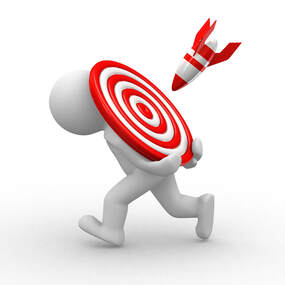 Bookbub will quite happily send your ad to everyone on its mailing list – but you are paying for that, and the vast majority of subscribers won’t be interested in your book because it isn’t in the genre(s) they read. But you will pay for that exposure anyway and it will eat through your budget in double quick time.. Targeting by genre (category) saves you money and increases the chances of your ad selling your book because the readers who see it are the right sort of readers for the book. But it isn’t just about genres, it is also about selecting good comparable (comp) authors as well and Bookbub allows you to do that too. These are authors whose books would sit well next to yours on a bookshelf. You could go for the biggest sellers in your genre, but that isn’t actually the best comp for an Indie. Those people are best sellers because the readers like their books specifically. It doesn’t mean they would buy your book too. You may reach a massive audience but hardly get any sales. 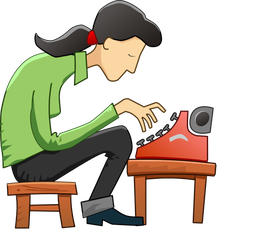 Selecting lesser comps is usually a better tactic. You can type in the name of a good comp author and if they have a profile on Bookbub (I’ll return to profiles later in the blog) you can select them as one of your comps. Bookbub will then include their audiences in the email list to which it sends your ad. A good mix of genre selection and comp authors should give you an audience that will be receptive to your books and sits in the middle of the green section of the dial that shows the potential audience size for your ad. If the pointer is in the yellow the audience is too broad, and the ad will cost you money by being seen by the wrong readers. If it’s in the red the audience is too narrow, and your ad might not be seen at all. You should be looking for 3 – 5 comp authors. Finally, we get to budget and bidding.  Your budget is whatever you can afford, of course, but if it isn’t high enough your ad won’t reach enough people and may not sell many books. If you can afford $10 a day (about £7.80) you are at the bottom end of the scale. You should be looking for $15 if you want significant results and you can go as high as your wallet will bear. Series authors will be able to afford to pay more because they will make their money back from “read throughs” to the next book in the series. If you are doing ad testing (which you should, and I’ll return to that in a minute) then you want to spend your overall budget as quickly as possible so you can get results for analysis. If you are running an ad that has already been tested, you may want to spread your ad over a defined period. If it is a tested ad you can set your budget higher at less risk. Never leave an ad to run without setting an end date. It could work out to be very expensive if you forget to terminate it. Finally, do you want to pay at a cost per click (CPC) rate or a cost per thousand clicks (CPM – M standing for “mille”, the Latin for 1,000)? The recommendation is CPM as that works out more economical, but it’s your choice. The key thing is to set a bid that’s going to win the bidding war. Bookbub makes a recommendation as to what level of bid to set according to the genres you have selected for the ad. Always bid higher than the highest suggested bid if you want to win that war. It doesn’t mean that your bid will cost you that, because it will only be charged at the level necessary to beat the next highest bid. But it will mean you will outbid every other ad most of the time, which increases your ad’s visibility.  When it comes to CPM bids it may mean your bid is higher than your daily budget, but don’t worry about that. It just means your ad will be seen by less than 1,000 subscribers each day. But it will still be seen by several hundred. Now to return to ad testing. There are two variables that need to be tested, but Bookbub has no facility for doing A/B testing, so you have to do it yourself by trial and error. The first variable is the graphic. A poor graphic won’t sell your books. If you have a graphic you know to be good because it worked for you elsewhere, eg Facebook ads, then it is fine to use that without testing, but if you are using a brand new graphic you have to be sure it is going to sell you books. So, you may want to test 3 or 4 different graphics by running an ad for each and analysing the results. Once you have tested all 3 (or 4) images, you will be able to decide which was the winner from the data Bookbub provides and that is the one you will run with. The second variable is your comp authors. If you don’t pick the right ones, your ad won’t be seen by the right audience. That will require additional testing, running each ad with the winning graphic but a different comp author for each ad. By setting your budget to be spent as quickly as possible, you will get your results more quickly for each test. No doubt some of you have seen the flaw in the testing tactics.  Kindle Countdown deals only run for a maximum of 7 days, and testing will use up between 2 and 4 days of that period, leaving fewer to make significant levels of sales. So, if you are running an ad for the first time you may have to set your book’s price to 99p manually for the duration of the testing, then set up a Kindle Countdown deal for the final winning ad, increasing the budget and spreading the spend over the 7 day countdown period. However, you only have to do the testing once. When your book is eligible for its next countdown deal, in 3 months’ time, you can use the same graphic and the same comp authors with the knowledge that you already have a winning ad. Now, I mentioned profiles above and it is recommended that you set up your own author profile on Bookbub. That isn’t so that other authors can use you as a comp, it’s because readers can see your profile and find out about your books. Your books will show up in searches that readers do on Bookbub itself, when they go looking for the latest bargains. As there are fewer books listed on Bookbub than there are on Amazon it is more likely that your books will be seen there, and it costs nothing to have a Bookbub profile. If you would like to dive deeper into the nuts and bolts of advertising with Bookbub, here’s a video from David Gaughran. If you have enjoyed this blog, or found it informative, then make sure you don’t miss future editions. Just click on the button below to sign up for our newsletter. We’ll even send you a free ebook for doing so.  What the difference is between a book’s Amazon’s sales ranking, it’s position in the Amazon Best Seller lists and the book’s actual popularity may not seem like a big thing, but it can affect the way your marketing strategy works. In fact, understanding the differences can make the difference between you selling a few books and selling a lot of books. It can definitely increase your KU downloads, if your book is enrolled in Kindle Select. You may think that sales rankings, best seller lists and popularity are just different names for the same thing. You would be wrong.  Popularity, in Amazon’s terms, is very different from the first two and it has a far greater impact on how visible your books are on Amazon. Visibility is just another way of saying “free advertising”, because books that are visible are likely to sell, whereas a book that isn’t visible can’t sell unless a reader is looking for it specifically, which is unlikely if they haven’t heard of it. So, let’s take each of those terms in turn and unpack them to see what the differences are. Sales ranking is a very volatile feature. First of all, it is relative to the millions of other books that are listed on Amazon. Secondly it changes by the hour, depending on who buys what and when. A book that has a sales rank of 1,000 today may be down at 5,000 tomorrow and 10,000 the day after. But that doesn’t mean it isn’t popular. Some people think that KindleUnlimited (KU) downloads don’t count for much when it comes to sales ranking, but this is an urban myth. A KU download is treated the same as the sale of a book, ie 1 KU download = 1 sale.  The problem is that the value of sales diminishes by 50% each day. So, a sale today is only counted as ½ a sale tomorrow and will only be counted as ¼ of a sale the day after. This is part of the reason that sales rankings are so volatile. If you sell 10 copies of your book today but none tomorrow, then today’s 10 sales are only worth 5 sales tomorrow and your sales ranking plummets. This means that promos have a disproportionate impact on sales ranking when they end. All those books that were downloaded during the promo period are only worth a fraction of what they were the day after the promo ends. A sale on day 1 of a 5 day promo is only worth 1/16 of a sale by the time the promo has ended.  Best seller lists are driven by sales rankings, so they are just as volatile. Yes, you may have earned that elusive brown “best seller” tag for your book, but you may only be at number 99 for an hour before dropping out of the list, because the lists are limited to the top 100 books. However, the lists are category specific, so even low sales in some niche categories can keep you in the best seller lists for days, weeks or even months. But those sales levels will never get you into the Kindle Store best seller list, which is dominated by the high volume sellers. By contrast, popularity isn’t calculated hourly, like sales rankings and best seller listings. Popularity is calculated as a 30 day rolling average. What’s more, your sales on day 1 don’t lose their value on day 2, 3, 4 etc. 100 books sold on Day 1 is still worth 100 books sold on day 30. It is only on day 31 that they drop out of the calculation. BUT – and it’s a big but for a reason – KU downloads aren’t counted at all. I’ll get to that reason later.  Unlike the bestseller rankings, popularity rankings don’t cut off at 100. If you are patient enough to keep scrolling, you could find out which is the 1 millionth most popular book on Amazon. If a book has made just one sale it will be in that list somewhere. The popularity listings aren’t easy to find on Amazon, so I’ll provide an easy to use guide for you to download. But viewing the listings isn’t the important part anyway. Very few readers even know they exist or how to find them. The important part is how Amazon’s algorithms use the popularity data to make books more visible. Promotions can play a big part in that visibility too, because they have so much influence on a book’s popularity during the rolling 30 day period within which the promo is running..  Amazon doesn’t like spikes in sales, which you often get with promos. They want to see consistency in sales. Which is why popularity is part of the algorithm and sales rankings aren’t. If your book is selling consistently even at a low sales rank, it can find its way into the algorithm and will be made more visible. For example, when people do searches, the results aren’t presented to them in sales rank order, they are presented in popularity order. So, if your book is more consistently popular than the No1 best seller, it will be more visible while the best seller is ignored, especially after the best seller starts drifting down the charts. Yes, your newly self-published book could appear higher in the search results than Harry Potter or last year’s Jack Reacher (but not this year’s Jack Reacher, because that will still be popular). The other way visibility is improved is through appearing in the “also bought” and “recommended for you” listings that appear when someone is actually viewing the page of a specific book.  Don’t underestimate the value of those listings. People like to read what other readers are reading, so the “also bought” list is particularly influential. And some people buy solely from the “recommended for you” lists because they know that their buying history is telling Amazon to show them the sort of books they like to read and it saves them having to do searches to find their next book. So, popularity feeds into popularity. Because if your book appears in those listings they will sell more copies - which indicates that they are still popular. So, you are into a virtuous circle. This is also why the relevance of keywords is so important in Amazon Ads these days. If you are getting lots of impressions but few clicks, it means that the ad isn’t appearing as relevant to readers. If you are getting clicks but few sales, that also tells Amazon that the keywords you are using aren’t relevant to the readers who are seeing the ad. If they were, more readers would be buying the book.  And relevance is important when it comes to your book being displayed in the “also bought” and “recommended for you” lists, because if the algorithm doesn’t think your book is relevant for the reader, it won’t be displayed. Relevance and popularity work hand in hand. So, all those broad targeted, scatter gun approach keywords that some authors use in their ads are actually harming the sales of the book, not helping them. The ad may make a few sales, but it won’t benefit from increased visibility, because the algorithm can’t work out its relevant audience. Now, to that reason why KU downloads aren’t included in the popularity calculations.  Essentially, the popularity list is about selling more books so that Jeff Bezos becomes richer. KU downloads don’t earn Mr Bezos anything. KU has its own popularity listings based on books that are downloaded, but including KU popularity data in with ebook popularity would skew the picture. The ebook popularity data is fed through to make recommendations for KU downloads. If you sell more ebooks you will see a corresponding rise in KU downloads at the same time. You can see this for yourself when you run a promo. Not only will you sell more books at 99p, you should also see a rise in KU downloads for the same book (there is a time lag of up to 4 days for the KU data to appear) However, if KU download data was fed back to the ebook popularity chart, it would create an inflationary spiral, with KU popularity driving more KU popularity. The ebook’s sales might be tanking, but it would still be flying high in the popularity rankings fuelled by KU. But if an ebook’s sales are dropping, Mr Bezos wants the book to drop lower in the popularity chart so that better selling books can rise. So, to make sure that the popularity chart reflects ebook sales and not KU downloads, KU download data isn’t fed into the ebook popularity chart.  How can you get your book higher up the popularity chart so that more people see it and buy it? Promos sell books, so that is the simplest way of doing it, But there are nuances to that. Promos are a great way of making books popular, but they have to be managed carefully. The algorithm is set up to reward steady sales over a period and to ignore spikes in sales. It also rewards an upwards trend rather than a flat trend line and a descending trend will be reduced in value as it indicates a drop in popularity. Knowing this, you can set up the marketing campaign for your promo to produce that rising trend. The following is provided for illustration purposes only. We are not suggesting it as an actual marketing plan (though you can use it if you wish). If you are doing a 99p Kindle Countdown promo over 7 days, you can plan your marketing activity to increase steadily over the promo period. Day 1 – Launch Facebook ad to run for 7 days. Day 2 – Launch Bookbub ad to run over 6 days. Day 3 – Send promo info to ½ of your email list Day 4 – Launch Amazon ad to run over 4 days. Day 5 – Increase spending on Facebook ad. Day 6 – Send promo info to other ½ of email list Day 7 – Change wording on Facebook ad to “Offer Ends Today”.  With each new activity layering onto the top of the previous one, sales are bound to take an upward trend rather than all being made on Day 1 and then starting to tail off by Day 3 as you start to run out of interested readers. And because your ebook is trending in the popularity chart you will continue to get sales after the promo has ended because it will be appearing in those other lists I mentioned. Supported by continued advertising, this can maintain your book’s popularity for a lengthy period, certainly until you become eligible for the next Kindle Countdown Deal for your book in 3 months’ time – when you start all over again. And, because your books are already popular, the new campaign will push you even higher up the popularity charts and get you higher up those lists, making your books more visible and driving organic sales - which feed back into the popularity calculation. So, there we end our quick look at the popularity chart, what it means for your book’s visibility and how to get your book higher in the chart. Don’t forget to download our guide (below) to assist you in locating the popularity charts. As with the best seller charts, they are broken down by categories so you can see where your book is in relation to other books in the same category. You will see that some of the books have the “best-seller” flag attached, but many more of them don’t. If you have enjoyed this blog, or found it informative, then make sure you don’t miss future editions. Just click on the button below to sign up for our newsletter. We’ll even send you a free ebook for doing so.
Disclaimer: The views expressed in this review are those of the reviewer and not necessarily those of Selfishgenie Publishing. Neither Selfishgenie Publishing nor the reviewer received any remuneration or financial inducement to provide this review.  “Scars Of The Heart” by Bob Van Laerhoven is an unusual collection of short stories. Why do I consider them so unusual? Because they are so dark, with so few redeeming features, that the stories make for uncomfortable reading. I’m not saying the stories are bad. In fact, overall, they are very good. It’s just that if you are looking for something uplifting and cheerful to read, you won’t find it here. But if you like dark stories with heavy psychological undertones, then this may be just the book for you. First, though, a few words about the author. He is Flemish-Belgian and has a lot of books under his belt published in his native tongue, He is a new author to me, but as I don’t speak Flemish or Dutch, that comes as no surprise. Some of his other books have been translated into English, so if you are a reader of psychological literary fiction you may have come across him elsewhere. As a freelance travel writer and, later, a charity worker Bob Van Laerhoven found himself in some of the worst trouble spots of the late 20th century. He witnessed horrific sights, and I believe these have influenced his stories more than a little. Because this is a translation I was unsure about some of the usage of vocabulary. In a number of cases I wondered whether the author used a word deliberately and I was unable to work out its context, or whether it was just a mistranslation. If you read the book, you’ll have to try to work that out for yourself. The author’s nationality gives some of the stories in this collection a connection to Belgium, but just as many have no connection. Some of the stories deal with characters who are either journalists or novelists but, again, some of them don’t. But all of the stories have darkness at their heart. Death and sexual assault are never far away, though the main thrust of the stories is the psychological impact of violence on the characters. Did I enjoy the book? Well, enjoyment may not be the right word, but I read it from cover to cover and never considered putting it to one side. This is why I have given it 4 stars. So why not 5 stars? I think it is the lack of any redeeming features amongst the characters and the lack of redemption for them. I feel that they don’t learn anything from their brushes with violence and death. It risks leaving the reader feeling as depressed as I think the author may be. I would have liked to have felt that there was more hope in the world and this collection does the opposite. It suggests that death is never far away from anyone, and we are wasting our time trying to avoid it. But, bleak as it may sound, this collection does absorb the reader into the author’s dark view of the world. I would hesitate to use the word “entertaining” about such dark subject matter, but it was certainly engaging at a very emotional level. If you would like to find out more about “Scars Of The Heart” by Bob Van Laerhoven, click here. If you have enjoyed this book review, be sure not to miss out on future blogs by signing up for our newsletter. We’ll even give you a free ebook for doing so. |
AuthorThis blog is compiled and curated by the Selfishgenie publishing team. Archives
June 2025
|
||||||

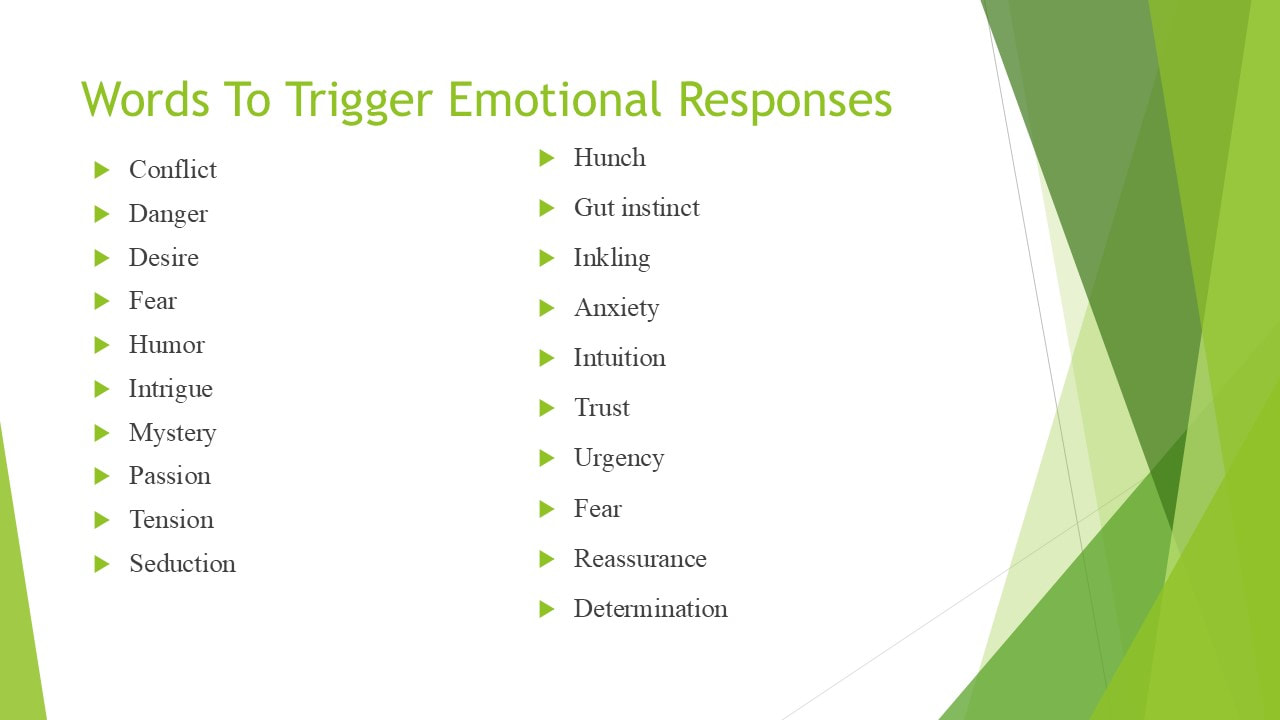

 RSS Feed
RSS Feed